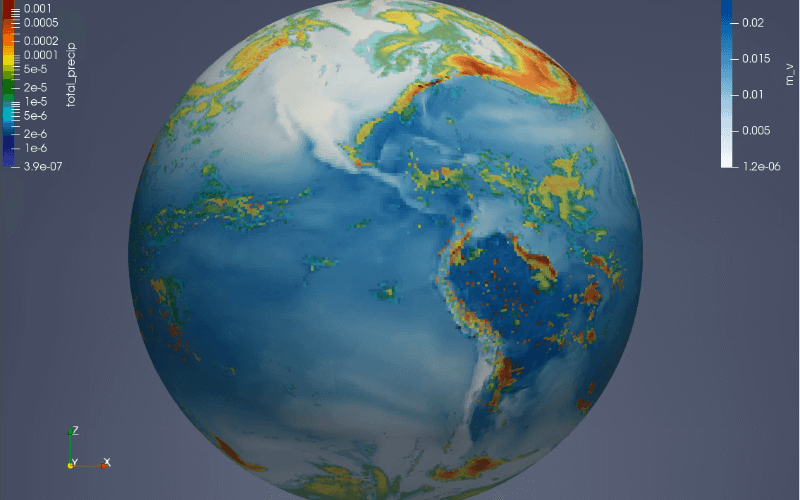June 9, 2021
Predicting weather and climate change at a million, million, trillion calculations per second
First global weather and climate simulations have run on the Met Office’s revolutionary new atmosphere model, marking the 10-year anniversary of the ground breaking ‘GungHo’ project between the Met Office, NERC and STFC

Severe winter weather in the UK, and its unpredictability, has a huge impact on our society, affecting transport, agriculture, energy use and leisure – disruptions to all of which can cost the UK economy hundreds of millions of pounds per day. Over recent decades, significant improvements in computer technology have resulted in increasingly accurate forecasts for both weather and climate change, ultimately saving lives and money.
However, within the next few years, supercomputers will be thousands of times faster than any in operation today. Known as ‘exascale’ supercomputers, they will contain millions of processors capable of performing a million, million, trillion calculations per second.
To put this number into perspective, it would take every single person on earth calculating for 24 hours a day, for over four years, to match what an exascale supercomputer will achieve in one second.
The Met Office’s current weather forecasting model – the Unified Model – is one of the most advanced and reliable weather forecasting systems in existence and is used across the world. However, it is fundamentally unsuited to the massive scale of exascale supercomputers, meaning it will be unable to take advantage of these new machines.
In 2011 weather and climate experts and computer scientists from the Met Office, NERC, and the Hartree Centre, at STFC’s Daresbury Laboratory, set out on a mission to solve this problem by redesigning the software for the Met Office weather prediction model in an initial 5-year project called GungHo. This project began the development of a new atmosphere model (which inherited the name GungHo) and laid the foundations for new software that would allow it to run on these new and emerging exascale supercomputers. This new software, called LFRic after Lewis Fry Richardson, an early pioneer of numerical weather forecasting, is being developed in a collaboration between the Met Office and STFC’s Hartree Centre.
A revolutionary part of the LFRic software is PSyclone whose development is being led by STFC’s Hartree Centre. PSyclone allows the Met Office scientists to concentrate on the development of GungHo without needing to worry about how to get it to run on supercomputers capable of performing a million, million, trillion calculations per second.
In an exciting 10th anniversary milestone for the GungHo project, the Met Office has successfully run both its first 5-day global weather and 1-year climate simulations using the new GungHo and LFRic software, the results of which are comparable to those generated by the current forecasting system. This is no mean feat given that the current system has had over twenty years of scientific development.
Michael Gleaves, Deputy Director of STFC’s Hartree Centre, said: “On the 10th anniversary of the GungHo project, these simulations are an exciting milestone in our mission to help enable the development of ever more accurate weather and climate prediction capabilities. Harnessing the power of next-generation supercomputers is a difficult challenge and it is critical to ensure that the weather prediction models used to simulate the atmosphere can run efficiently and accurately on them. For the Hartree Centre, this is a very exciting time to be working with the Met Office, keeping the UK at the forefront of scientific developments in weather forecasting and climate science.”
Ben Shipway, Head of the research team developing GungHo at the Met Office, said: “Bringing together the expertise of mathematicians, computer scientists and weather and climate domain experts is a vital part in the development of our next generation computer codes. Only through this process of co-design will we meet the challenges presented by exascale computers and reap the benefits they will provide. This work with STFC is a great example of such a collaboration and it’s really exciting to see the first simulations being delivered by this project. ”
With the new code provisionally planned to go live in 2026-2027, as the next generation of supercomputers become available, there is still a way to go for GungHo and LFRic. During this time, key project milestones will include adding the ability to perform regional rather than global weather forecasts, as well as improving the sophistication of the model by coupling it with that used for the ocean. Read more about the project and latest developments in GungHo and LFRic at the Met Office website.



